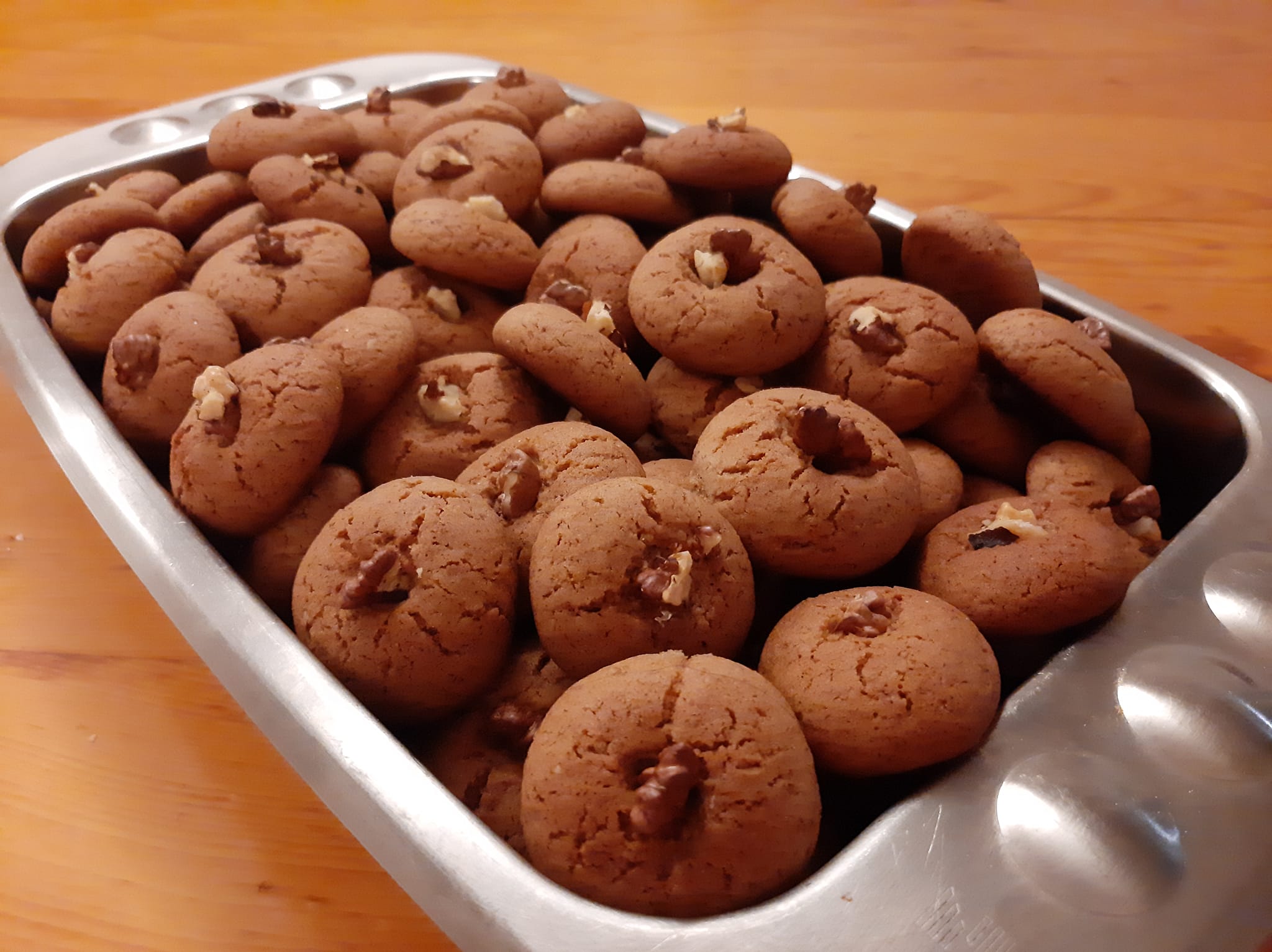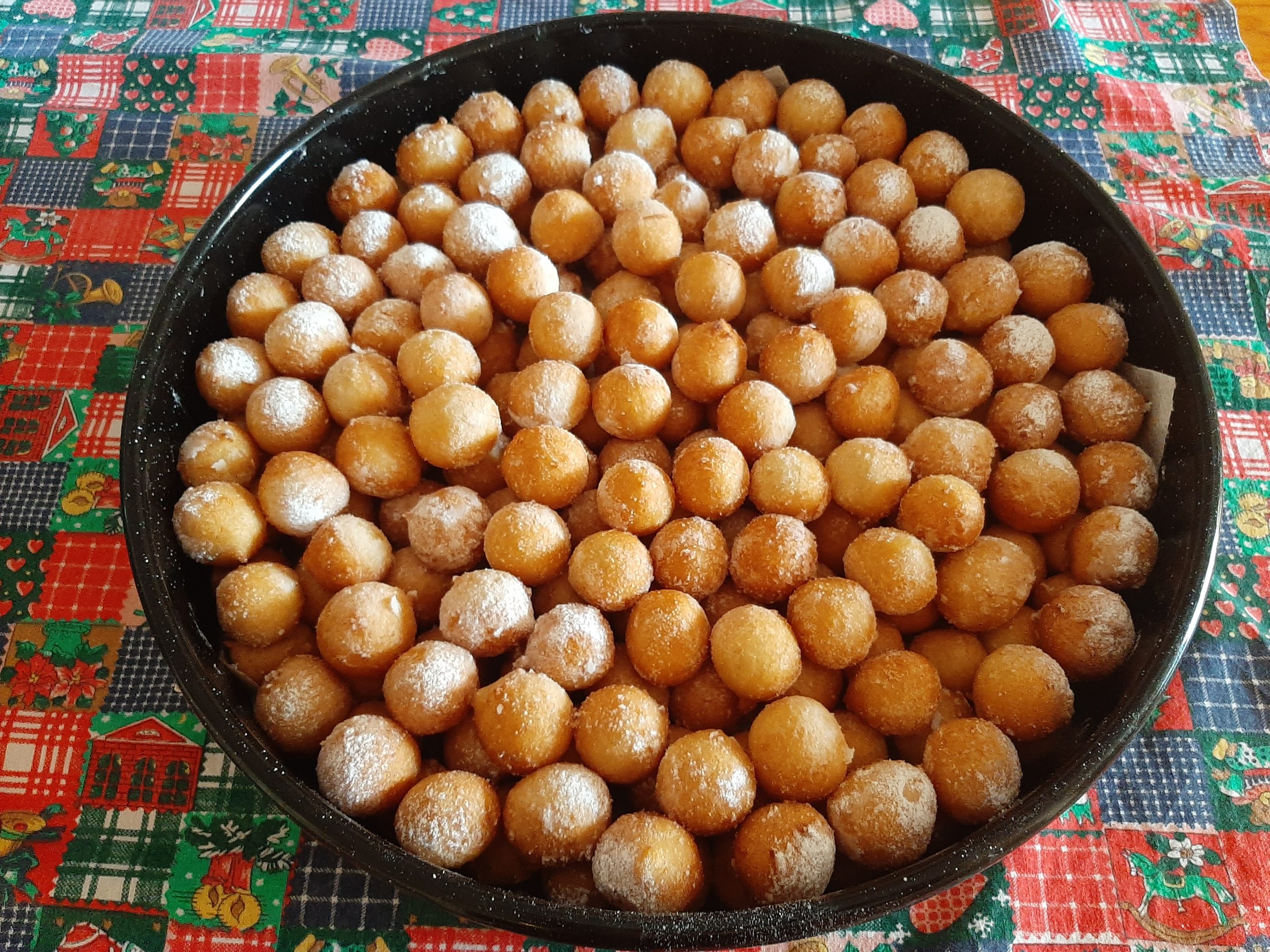The sweet story of the Hvar oil

The period of festivities and pašurate begins at the end of November on Hvar. The first round of olives had been harvested by then, aged in water or the sea for a certain time, filling the stone troughs with green-coloured oil. Olive oil – the liquid gold of every family – has always been the staple food of the islanders who thank the holy olive tree for every squeezed drop.
The story of pašurate (choux fritters) and medenjaci (gingerbread cookies) is a story of love between olive oil and traditional pastries. Gastronomically speaking, they are in perfect fusion. Pašurate are pašurate, and fritters are fritters, just for the record. They are often mistaken for each other because they have a similar appearance and shape. In fact, pašurate have a completely different texture, and specific ingredients, while the method of preparing the batter includes “glogoj” (boiling). Unlike fritters, which usually get stiff the next day, pašurate are still soft for days, naturally if they survive past their warm and delicious phase. If we have any say in it, it`s almost a sin to mix these two terms. Basically, pašurate reign around the days of the following saints: Catherine, Andrew, Nicholas, Lucia and Spyridon, who is also the patron saint of olive growers. Pašurate were usually prepared in that period to celebrate the name day of a particular saint, but primarily because that was the time when the first olive oil was pressed from the harvested olives. Except in the time of Advent, pašurate were also prepared and consumed on the morning of Good Friday in the village of Dol on Hvar. As unfathomable as it may seem today, the first-ever pašurate were fried in olive oil because it was a time when they had olive oil in abundance right after the harvest and processing of olives. All of this usually coincided with the first cold days when a wood stove and/or open-hearth furnace were ignited, and the tasty balls would start swirling in the cauldron. It took more than one pair of hands. A pair of hands for the preparation of ingredients, for a lengthy beating of batter, and for squeezing balls through fingers and frying at a precisely determined temperature. They didn’t have any of today’s digital kitchen thermometers, but they relied on their own experience. They checked the temperature of the oil by putting or removing wood from the furnace, depending on whether the balls kept swirling or remaining still. Lengthy frying would fill the entire room with the characteristic aroma of oil, the smell that lingered in everyone`s clothes and hair for days. The walls of the room never lost that smell because they absorbed it on daily basis.
Today, pašurate are fried in soybean oil and are not associated with olive oil. And yet, just as in times past, they are never so tasty as near the end of the Lord’s year. In our family, the processing of fresh olive oil is associated with another cookie, not pašurate. These are Grandma`s old-fashioned gingerbread cookies medenjaci. While she was able to knead the dough, every morning she would send her grandchildren to school with a bag of medenjaci for brunch. Medenjaci are decorated with a pressed almond, but I prefer a piece of walnut, which is much softer, and olive oil gives them a special flavour. When baked, they turn slightly brown and crack, just like the red soil on Hvar after a long drought. At first, they are crunchy, but the next day they soften because of the honey. Grandma`s old-fashioned medenjaci are just a prelude to PAŠURATE – adored golden balls of happiness. And the ruffle drum is just about to spin.















